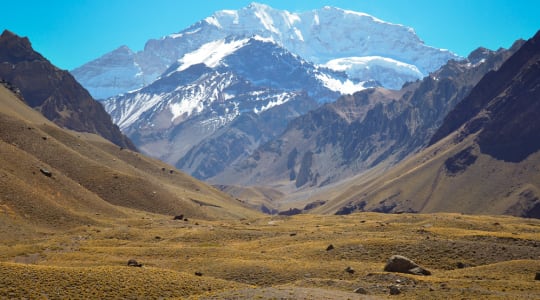
Aconcagua is the highest peak in the Western Hemisphere, located in the Andes mountain range in western Argentina, near the border with Chile. Its summit stands at an elevation of 6,959 meters (22,831 feet) above sea level, making it one of the Seven Summits, a group of the highest peaks on each of the seven continents.
Aconcagua is a popular destination for mountaineers, who come from around the world to attempt its challenging ascent. Although the mountain is not technically difficult to climb, its extreme altitude and unpredictable weather conditions make it a formidable challenge even for experienced climbers.
Aconcagua is also a popular trekking destination, with several hiking routes leading to its base camp. The most popular route is the Normal Route, which follows the Horcones Valley and takes climbers up the mountain's northwest face.
Despite its high altitude, Aconcagua is home to a variety of flora and fauna, including guanacos (a type of South American camelid), condors, and the Andean fox. The mountain is also surrounded by stunning natural scenery, including glaciers, valleys, and snow-capped peaks.
The first recorded ascent of Aconcagua was made in 1897 by Swiss mountaineer Matthias Zurbriggen. Since then, the mountain has been climbed by thousands of people, making it one of the most popular climbing destinations in the world.
Explore Near Aconcagua
Discover 1 attraction and 2 cities within 75km. Perfect for planning day trips, finding connecting flights, or discovering new destinations to explore during your visit.
Nearby Attractions & Places to Visit
1 destination within 21.4km from your location

Nearby Cities Worth Exploring
2 destinations within 58.5km - 67.7km from your location
Cross-Border Adventures Near Aconcagua
Discover cross-border adventures near Aconcagua. Explore neighboring countries with similar attractions and extend your travel experience across borders.




